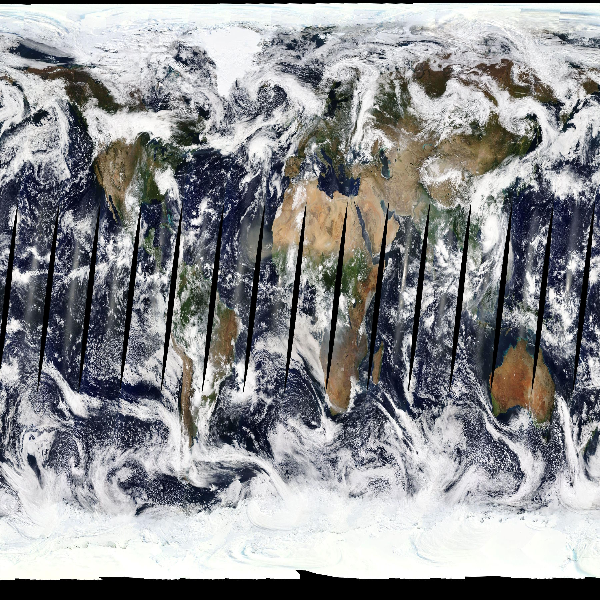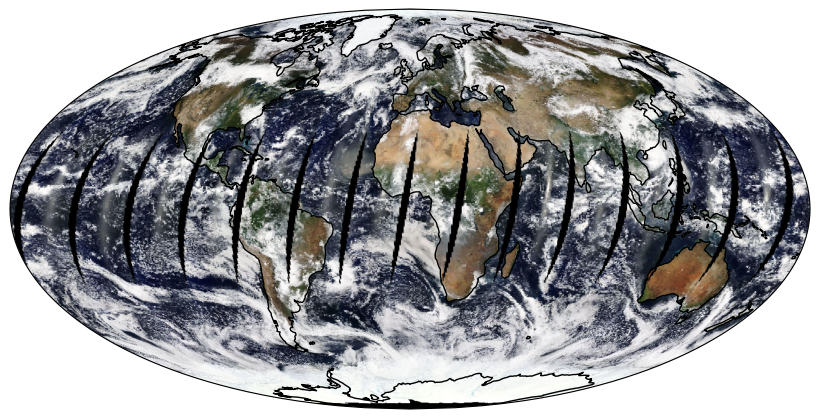Working with owslib’s WMS interface¶
OWSlib is a Python package for client programming with OGC web service interface standards. In this tutorial we’ll work with the WMS interface.
from owslib.wms import WebMapService
Web Mapping Service¶
We start by fetching a map using the WMS protocol. We first instantiate a WebMapService object using the address of the NASA server, then browse through its content.
Traceback (most recent call last):
File ~/checkouts/readthedocs.org/user_builds/pavics-sdi/conda/latest/lib/python3.10/site-packages/IPython/core/interactiveshell.py:3577 in run_code
exec(code_obj, self.user_global_ns, self.user_ns)
Cell In[2], line 1
wms = WebMapService("https://neo.gsfc.nasa.gov/wms/wms")
File ~/checkouts/readthedocs.org/user_builds/pavics-sdi/conda/latest/lib/python3.10/site-packages/owslib/wms.py:50 in WebMapService
return wms111.WebMapService_1_1_1(
File ~/checkouts/readthedocs.org/user_builds/pavics-sdi/conda/latest/lib/python3.10/site-packages/owslib/map/wms111.py:74 in __init__
self._capabilities = reader.read(self.url, timeout=self.timeout)
File ~/checkouts/readthedocs.org/user_builds/pavics-sdi/conda/latest/lib/python3.10/site-packages/owslib/map/common.py:69 in read
return etree.fromstring(raw_text)
File src/lxml/etree.pyx:3264 in lxml.etree.fromstring
File src/lxml/parser.pxi:1989 in lxml.etree._parseMemoryDocument
File src/lxml/parser.pxi:1876 in lxml.etree._parseDoc
File src/lxml/parser.pxi:1164 in lxml.etree._BaseParser._parseDoc
File src/lxml/parser.pxi:633 in lxml.etree._ParserContext._handleParseResultDoc
File src/lxml/parser.pxi:743 in lxml.etree._handleParseResult
File src/lxml/parser.pxi:672 in lxml.etree._raiseParseError
File <string>:1
XMLSyntaxError: Start tag expected, '<' not found, line 1, column 1
The content is a dictionary holding metadata for each layer. We’ll print some of the metadata’ title for a couple of layers to see what’s in it.
for key in [
"MOD14A1_M_FIRE",
"CERES_LWFLUX_M",
"ICESAT_ELEV_G",
"MODAL2_M_CLD_WP",
"MOD_143D_RR",
]:
print(wms.contents[key].title)
Active Fires (1 month - Terra/MODIS)
Outgoing Longwave Radiation (1 month)
Greenland / Antarctica Elevation
Cloud Water Content (1 month - Terra/MODIS)
True Color (1 day - Terra/MODIS)
We’ll select the true color Earth imagery from Terra/MODIS. Let’s check out some of its properties. We can also pretty print the full abstract with HTML.
# NBVAL_IGNORE_OUTPUT
from IPython.core.display import HTML
name = "MOD_143D_RR"
layer = wms.contents[name]
print("Abstract: ", layer.abstract)
print("BBox: ", layer.boundingBoxWGS84)
print("CRS: ", layer.crsOptions)
print("Styles: ", layer.styles)
print("Timestamps: ", layer.timepositions)
HTML(layer.parent.abstract)
Abstract: None
BBox: (-180.0, -90.0, 180.0, 90.0)
CRS: ['EPSG:4326']
Styles: {}
Timestamps: ['2006-09-01/2006-09-14/P1D', '2006-09-17/2006-10-10/P1D', '2006-10-12/2006-11-18/P1D', '2006-11-21/2007-08-16/P1D', '2007-08-18', '2007-08-20/2007-09-11/P1D', '2007-09-15/2007-12-30/P1D', '2008-01-01/2008-06-12/P1D', '2008-06-14', '2008-06-16/2008-07-12/P1D', '2008-07-14/2008-09-17/P1D', '2008-09-19', '2008-09-22/2008-10-17/P1D', '2008-10-19/2008-10-22/P1D', '2008-10-28/2008-12-02/P1D', '2008-12-04/2008-12-20/P1D', '2008-12-23/2008-12-30/P1D', '2009-01-01/2009-01-20/P1D', '2009-01-22/2009-04-19/P1D', '2009-04-23/2009-07-05/P1D', '2009-07-08/2009-12-30/P1D', '2010-01-01/2010-07-16/P1D', '2010-07-18/2010-12-07/P1D', '2010-12-09/2010-12-30/P1D', '2011-01-01/2011-01-25/P1D', '2011-01-27/2011-03-19/P1D', '2011-03-21/2011-07-23/P1D', '2011-07-27/2011-08-27/P1D', '2011-08-30/2011-12-13/P1D', '2011-12-15/2012-02-19/P1D', '2012-02-21/2013-12-01/P1D', '2013-12-04/2018-03-12/P1D', '2018-03-14/2018-05-16/P1D', '2018-05-18/2018-09-17/P1D', '2018-09-19/2022-05-04/P1D', '2022-05-06/2022-12-21/P1D', '2022-12-23/2023-09-28/P1D', '2023-10-01/2023-10-17/P1D']
These images show the Earth's surface and clouds in true color, like a photograph. NASA uses satellites in space to gather images like these over the whole world every day. Scientists use these images to track changes on Earth's surface. Notice the shapes and patterns of the colors across the lands. Dark green areas show where there are many plants. Brown areas are where the satellite sensor sees more of the bare land surface because there are few plants. White areas are either snow or clouds. Where on Earth would you like to explore?
Getting the image data¶
Now let’s get the image ! The response we’re getting is a ResponseWrapper object, we need to read its content to get the actual bytes for the png file. Let’s first display the raw image, then try to map it onto a projection of the Earth.
response = wms.getmap(
layers=[
name,
],
styles=["rgb"],
bbox=(-180, -90, 180, 90), # Left, bottom, right, top
format="image/png",
size=(600, 600),
srs="EPSG:4326",
time="2018-09-16",
transparent=True,
)
response
<owslib.util.ResponseWrapper at 0x7fa543b4fdf0>
from IPython.display import Image
Image(response.read())

Plotting the image on a map¶
Using the cartopy library, we’ll overlay the image on a map of the Earth. Since Matplotlib’s imread function expects a file-like object, we’ll mimic a file object in memory using the io.BytesIO function.
warnings.filterwarnings("ignore", category=cartopy.io.DownloadWarning)
fig = plt.figure(figsize=(8, 6))
ax = fig.add_axes([0, 0, 1, 1], projection=cartopy.crs.Mollweide())
ax.imshow(
data,
origin="upper",
extent=(-180, 180, -90, 90),
transform=cartopy.crs.PlateCarree(),
)
ax.coastlines()
plt.show()
